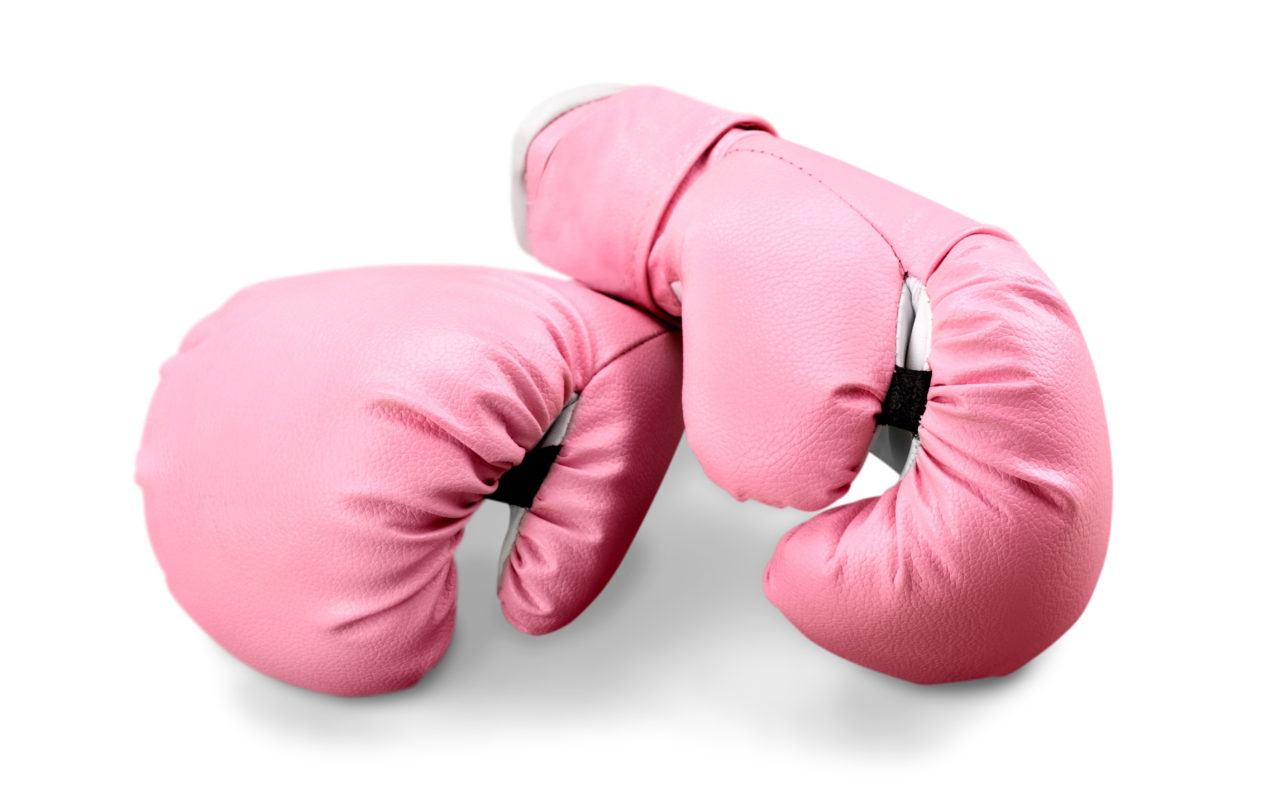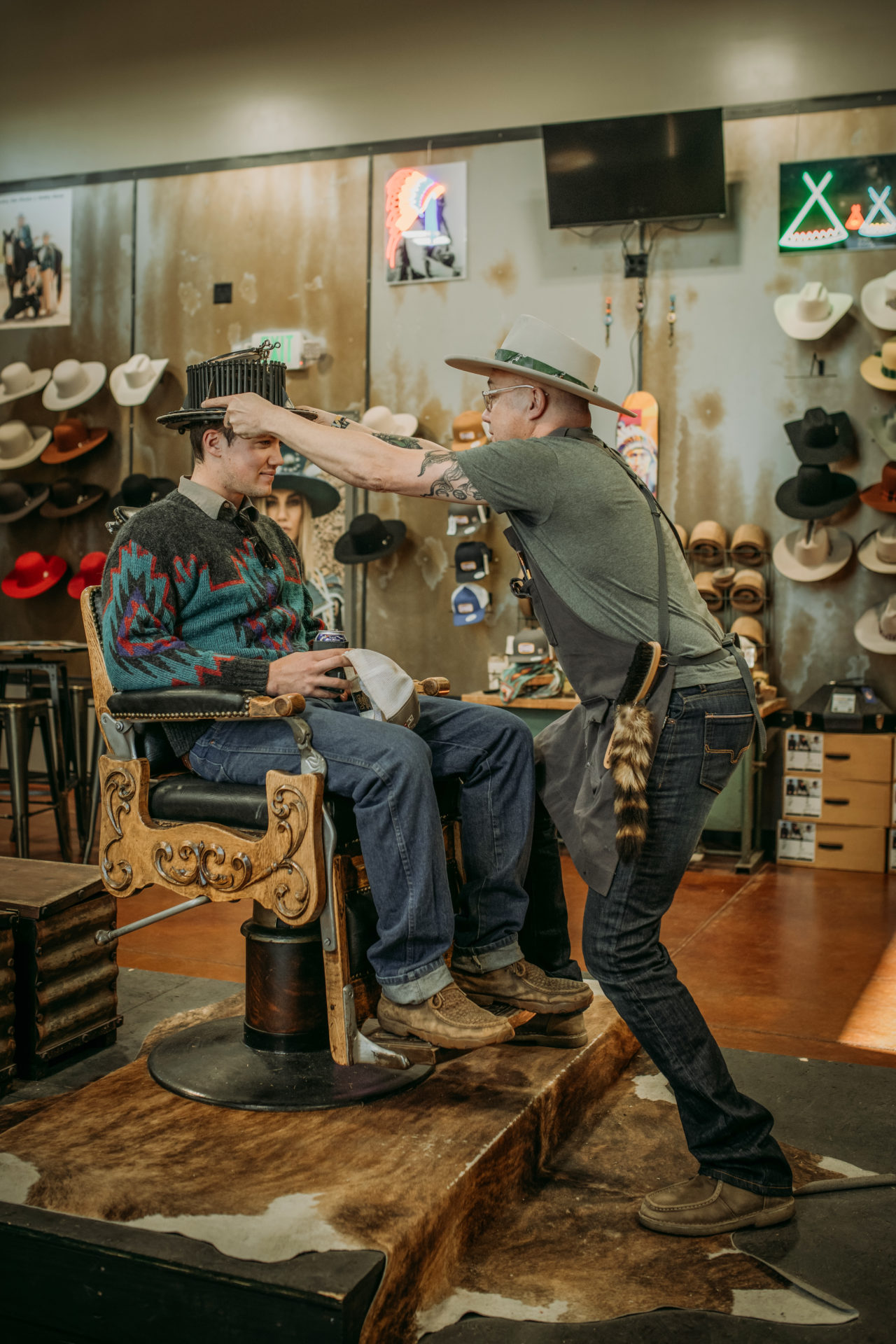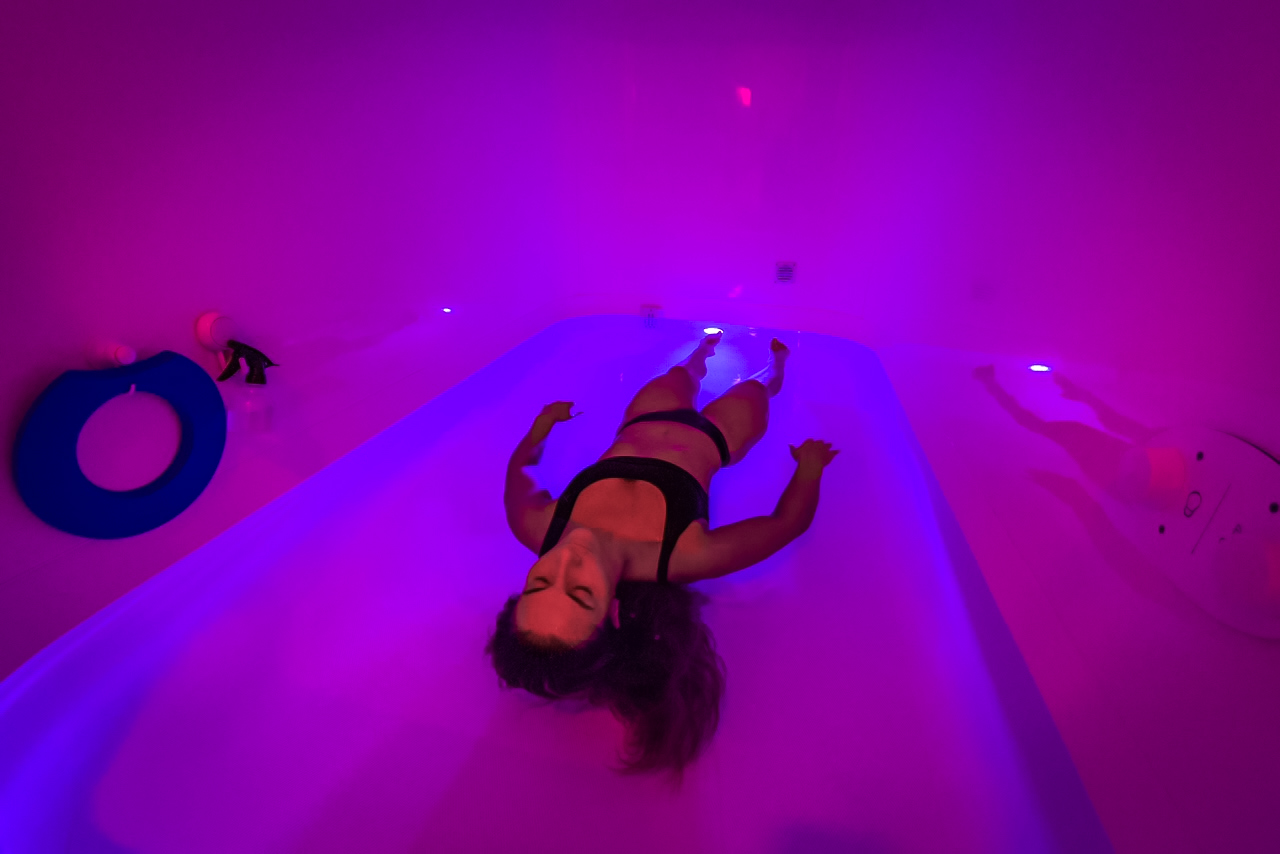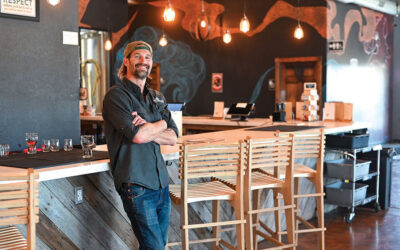At the groundbreaking UNC cancer clinic,
workout warriors show who’s the champ.
by Kristin Owens
At the groundbreaking UNC cancer clinic, workout warriors show who’s the champ.The burning sensations, raw port entries, fuzzy chemo brain. They’re all by-products of cancer treatments that patients wish they could forget. In between gut-punching therapies, it’s a good idea to relax, right? Nope! Instead, head to the gym.
That’s probably the last place physically depleted folks want to go, but it’s worth it. Exercise is good for you, even—perhaps especially—when you’re sick with (and sick of) cancer.
Since 1996, the University of Northern Colorado Cancer Rehabilitation Institute (UNCCRI) has provided exercised-based programs for cancer patients at all stages of treatment. Located on the University of Northern Colorado campus, the clinic has a very unclinical vibe. Clean, yes—but not sterile. From the furniture selections to the front desk assistant’s smile, the environment is comfortable and friendly. The 10,000-square-foot-facility has a bright, airy exercise room with views to shady green grass and trees. You’ll also find modern examination rooms for blood work and biomarker testing, an underwater treadmill for joint exercises and water aerobics, and small classrooms for students and interns. It all adds up to a facility that does a whole lot more than build muscle mass. The UNCCRI operates on three levels: clinical care, education and research.
It’s got plenty of gym equipment, but this is NOT a gym. You won’t work with personal trainers but rather with “clinical cancer exercise specialists,” many of whom are students from UNC and elsewhere. And definitely don’t call the work that patients are doing here “rehab.” Michael Lazio, UNCCRI’s clinical coordinator, explains that the institute “prepares bodies for what happens next.” That could be surgery, chemotherapy, radiation and/or drug therapies, depending on the individual patient’s type of cancer and stage of disease progression. Lazio calls it “pre-hab”—an effort to treat the body before, during and after treatment. The healthier and stronger you can make your body before it’s subjected to potentially debilitating treatments, the better.
It’s a proactive, pioneering approach. And it’s getting amazing results.
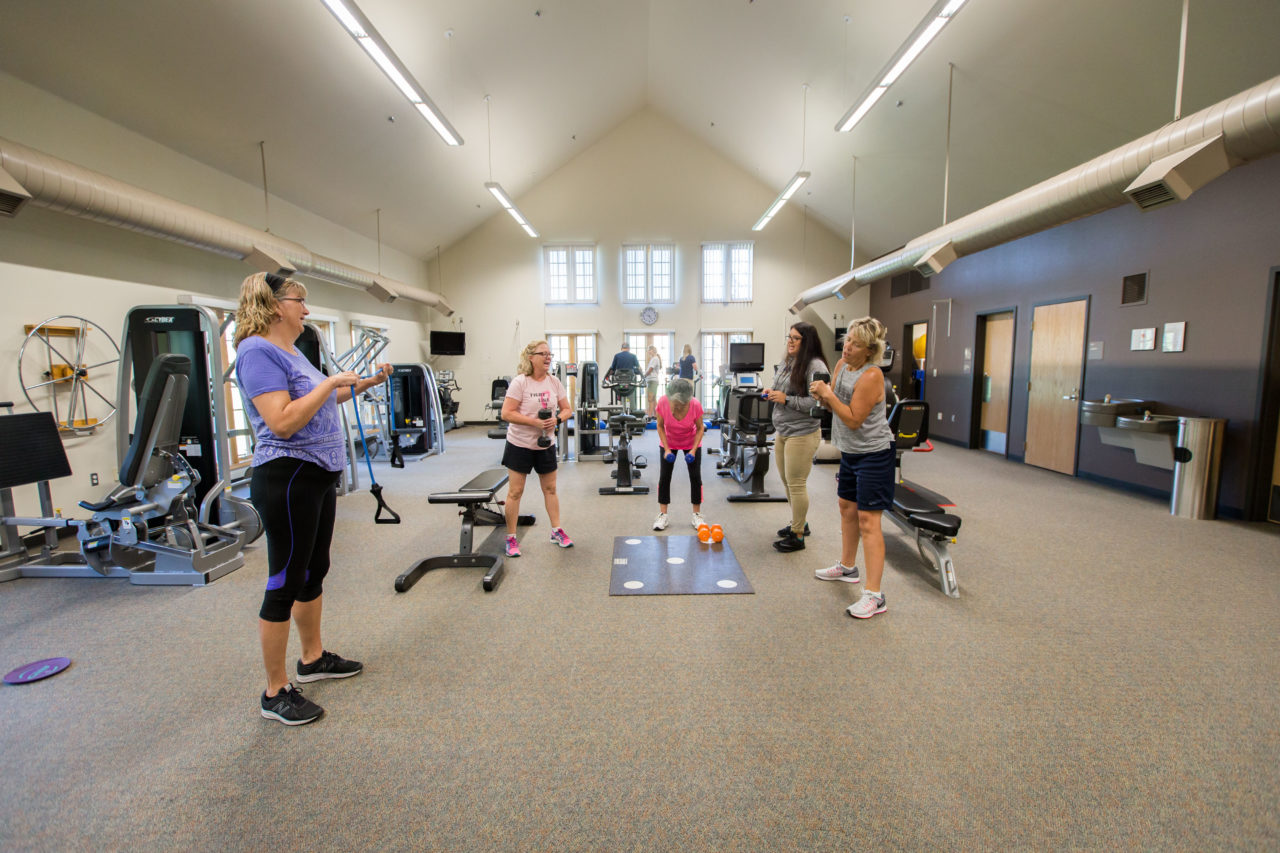
The Institute’s workout room is bright, airy and comfortable. | Photo courtesy UNCCRI
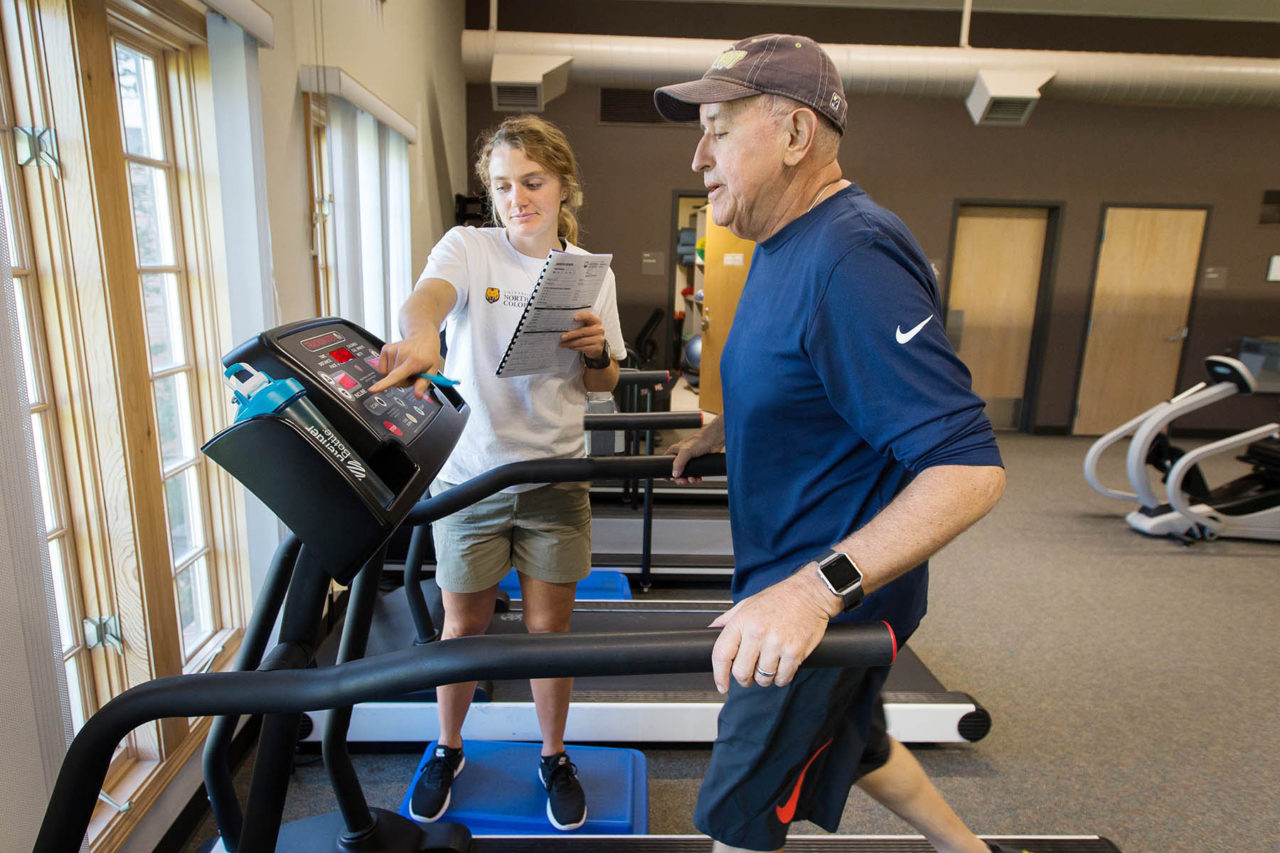
Clinical cancer exercise specialists are drawn from a competitive pool of applicants from around the world. | Photo courtesy UNCCRI
And in this corner . . .
Case in point: Claudean Boatman. She was diagnosed with Stage 2B breast cancer in 2016, and a bevy of overwhelming health issues soon followed. Within weeks, she didn’t even have the stamina to walk her Cavalier King Charles spaniels around the block. Boatman began looking at physical therapy options when a friend referred her to UNCCRI.
The institute was the brainchild of Dr. Carole Schneider, a UNC exercise science professor who was diagnosed with cancer in November 1995. Her physicians told her to do whatever she felt like when it came to exercise, but that wasn’t good enough for her. She wanted to know: Would exercise hurt or help? What types of exercise made the most sense? How much exercise could (and should) her body withstand? There was no research to point her in the right direction. In 1996 she started the UNCCRI to look for answers.
Originally called the Rocky Mountain Cancer Rehabilitation Institute, it was the first U.S. research center of its kind. As she outlasted her cancer, Schneider helped pioneer a new field of study, co-authoring a seminal textbook (Exercise and Cancer Recovery), churning out dozens of journal articles, and training an army of graduate students. As the evidence from her research built, Schneider developed one of the first exercise programs to help cancer patients endure, and recover from, the disease and its invasive treatments.
By the time Boatman walked through the door, UNCCRI had its program down to (yes) a science. Boatman went through an initial assessment and a battery of tests from head to toe to create a baseline from which she and the clinic could measure her progress. Based on those preliminary findings, facility staff created a comprehensive workout program designed specifically for her, with customized objectives that reflected her physical condition, her disease prognosis, her cancer treatment and her personal goals.
UNCCRI uses a very structured model that’s broken down into four distinct phases. Each phase lasts 12 weeks, with three one-hour appointments per week. All told, Boatman was looking at a commitment of nearly 150 hours. Gulp. But she was determined to get back out there with those spaniels, and she found that UNCCRI’s focused, regimented approach helped not only physically but mentally and emotionally as well. The routine provided Boatman with a sense of stability during a shaky, life-altering time. She met other patients who shared her issues and circumstances. There was no need to whisper, “I have cancer,” nor to explain thinning (or missing) hair. There were no mirrors in the exercise room, no jocks flexing or dropping barbells—just people giving each other high-fives, celebrating victories as small as being able to carry a basket of laundry.
Boatman also got to know the UNCCRI exercise specialists on a first-name basis, seeing them far more often than her doctors. Those relationships played a not-insignificant role in her fight against cancer.
“No one feels sorry for you or thinks you can’t do something,” she says of her interactions at UNCCRI. “No one gives you uninformed advice.” So even though her chemotherapy and 33 radiation sessions wore her out, Boatman came to her appointments anyway—week after week, session after session. She went the distance at UNCCRI, moving through all four phases of her program without missing a single session.
Now two years post-treatment, Boatman is stronger and tougher because of her fight. She’s also proud that her experience yielded data that will help the institute develop new cancer-fighting initiatives. She’s continuing with strength training and impact exercises to alleviate bone loss and maintain her newfound health. UNCCRI continues to make regular assessments that help Boatman see gains and losses (which are both equally important), and they’ve given her the information to act as a stronger advocate for herself. Recently, after she started in on a new prescription, her physical indicators took a dip. Armed with that knowledge, she had the courage to say to her doctor: “This isn’t working for me, can we change it?”
Boatman feels “supported and supportive” at UNCCRI, connected to both the staff and to other patients. The institute provides valuable camaraderie and a place to be yourself, even when you may be at your worst.
Building a Game Plan
UNCCRI’s customized, highly personal exercise plans have evolved over time, building on more than 20 years of research by Schneider and her proteges. One of those graduate students, Jessica Brown, spent years as UNCCRI’s clinical coordinator while earning first a master’s, and later a Ph.D., in exercise physiology from UNC.
Brown, now a professor at Carroll University in Wisconsin, designed the current four-phase model to “expand and enhance the efficacy of exercise-based cancer rehab,” and to close the gaps between research and application. Phase 1 starts alongside cancer treatment (yikes!), with low-intensity, one-on-one training that helps patients mitigate the side-effects of chemo or radiation. Their prescribed exercises help patients like Boatman cope with the various ailments that can accompany chemo and radiation, including pain, loss of strength, limited motion and flexibility, decreased endurance, imbalance, numbness, general mobility issues and cancer-related fatigue.
Her physicians told her to do whatever she felt like when
it came to exercise, but that wasn’t good enough for her.
Reassessments after each completed phase serve a range of critical functions. They yield reams of essential data that help to refine and improve Brown’s model, while also measuring each individual patient’s progress and registering their victories. And the assessments go beyond purely physical indicators, measuring cognitive functions like decision-making and recall. UNCCRI’s programs include computer-based exercises to help the brain, and there’s also a “brain bike” where patients can work out both mind and body at the same time.

Patients and staff develop close bonds at the Institute. | Photo courtesy UNCCRI
UNCCRI director Reid Hayward, Ph.D., says the continued goal of UNCCRI’s research is to study the beneficial effects of exercise in cancer survivors. Patient data enables the institute’s researchers to measure all sorts of dynamics to see what the body goes through, even down to the cellular level. Cardiorespiratory fitness, peak oxygen consumption, muscular strength, body composition (fat and muscle mass), fatigue and depression are all closely monitored. At its core, Dr. Hayward says, it’s all about retraining immune system functions. Nasty myeloid-derived suppressor cells allow cancers to flourish. Exercise allows the immune system to do what it needs to do to fight them, while protecting the heart and other organs from the toxic side-effects of chemotherapy and drugs.
Based on the strong results the facility’s patients are showing, UNCCRI’s approach is gaining adherents throughout the United States and beyond. A team of institute researchers recently paid a visit to Pacific Hospital in Honolulu, Hawaii, and will soon present workshops at the Riley Hospital for Children in Indianapolis. Faculty from Seowon University in South Korea recently came to UNCCRI to learn and observe. Jessica Brown has established another research-based clinic at her new home in Wisconsin. Called CURE (Carroll University Rehabilitative Exercise), it will replicate and build upon the work she’s done at UNCCRI.
Going the Distance
Given the quality and intensity of UNCCRI’s programs, they must be terribly expensive, right? To the contrary, UNCCRI is a nonprofit and exists on grants and donations to help keep patient costs down. The current rate is $180 per phase, or $720 for the full four-phase cycle. At three hours a week of individualized attention, for up to 48 weeks, that works out to $5 per session. Try finding a gym that offers a better deal.
Because it’s on a college campus, UNCCRI employs students as clinical cancer exercise specialists. They’re the backbone of the program’s success, but it’s not an easy job. Each semester, 10 to 12 students are selected for internships through a highly competitive process. Applications come in from all over the world, submitted by students eager to get hands-on practice in the institute’s forward-thinking techniques. Students have traveled to Greeley from Iceland, Taiwan and Brazil, and then taken their training back to their own countries.
There’s nothing like youth and enthusiasm to help you face up to a challenge, and Boatman says the specialists infuse the clinic with vitality. A middle-school teacher for 25 years, Boatman loves the institute’s educational component and says the specialists “bring energy and empathy” to patients. Since specialists rotate out after each semester, patients work with multiple partners during their four phases. After a semester of focused, practical training, interns are “more than prepared to get into the workforce,” Lazio says.
At UNCCRI, it’s not just about fighting cancer, but winning. Thanks to Dr. Schneider’s legacy, Boatman can walk her beloved dogs. College students receive hands-on training to help patients get through a difficult stretch of their lives. And cancer exercise research is helping others reap the benefits of good health.
Sounds like cancer is up against the ropes, courtesy of Colorado.
